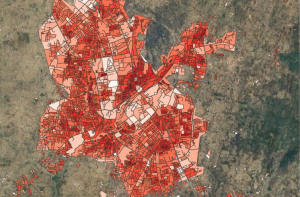From satellite data to population estimation
From satellite data to population estimation

From satellite data to population estimation : A Population, climate and environment seminar
May 20, 2021, 11-12.30
Satellite images provide a wealth of information on human settlements and therefore can be a useful source for population estimation, especially in regions where recent population census data are not available or at times when data collection is not possible. This online seminar offers an insight into two such approaches.
Zoom link : https://ined-fr.zoom.us/j/99505490145?pwd=eUZxK1JmNUZ0LzZvSGNzTTJZZzZNZz09
ID : 995 0549 0145
Pwd : 953924
The seminar will take place in French, with slides in English.
Population from space: when satellite imagery helps demographic census in insecure context
- Edith Darin (U. Southampton, Worldpop)
We will offer first an overview of the different gridded population datasets and models produced by WorldPop, their advantages and limitations. The second part will be devoted specifically to the GRID3 initiative that develops bottom-up population modelling extrapolating localized population data with geospatial covariates in a hierarchical Bayesian framework.
More information : Abstract
How TeleCense helps Companies, Authorities, International Organizations and Labs to assess and anticipate population growth and migration in emerging countries
- Léo Lipovac, Steven Guern and Michel Benet (Diginove)
Using Copernicus satellite imagery, we are able to detect built-up areas and to characterize them. Using these characteristics along with other geospatial covariates, we develop demographic models to estimate the population. The regularity of Copernicus images allows us to follow its evolution on a 6-month basis and provide local and global trends.
More information : Abstract
